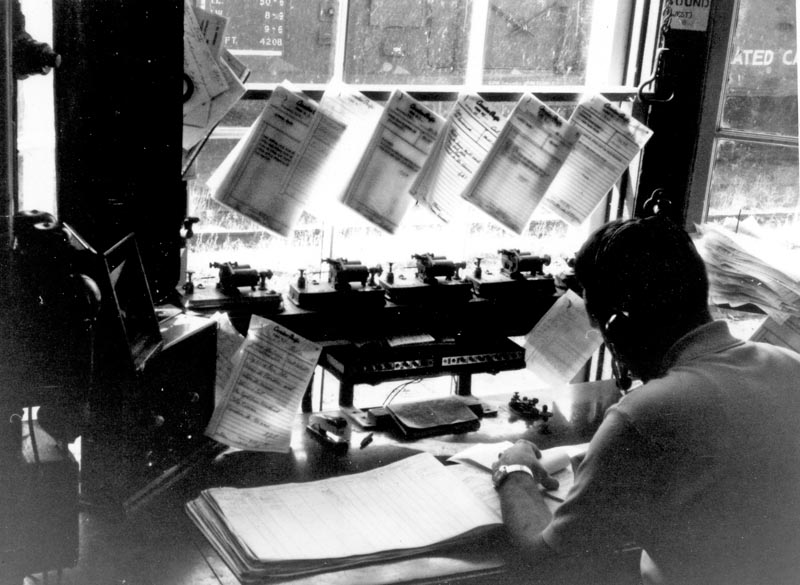
 On the left, below the telegraph sounder -the triangular box-like affair, is a panel containing two lights for noting the approach of trains. When the right hand light was on, it indicated that a train was approaching from Ottawa Union Station; if the left hand light was on, it meant that a train was coming from Ottawa West. To the left of the sounder is a hand crank telephone which linked Hull West with Ottawa West, the crossing guard in the tower at Montcalm Street just to the east of the Hull West station, (see Photo Page), Hull East, and Hull. Above the operator's head is a place for storing a handle affair type of tool. This instrument was used to move the train order signal located outside of the station to notify trains of train orders that they might have to pick up at the station. If the handle was up, as it is here, the train order signal was red for southbound trains to Ottawa West and all trains had to stop for orders. The northbound signal is also red - judging by the shadow in the window. As noted in our story, a certain former Swing Operator, who is also a member of BRS, "was not a fan of having two trains at Hull West at once". The operator is seen busily writing all orders and information to his relief in the "Transfer Book". On the desk, beneath the book, is the register book of all trains arriving and leaving Hull West. In front of the operator's left hand is the Morse Code key to send messages. The four instruments in front of the desk, below the window, are relays. The relays captured the pulses off the telegraph wires. These pulses came through the relays, making clicking noises. Should the operator or agent hear his call - HU for Hull West, ".... ..-", - repeated three times followed by the calling station, say Shawville - HW, ".... —.", the operator would push a button below the third relay, which would transfer the relay's sound over to the sounder. The sounder amplified the sound and also drowned out the other office noises. Below the second relay is another box of buttons. These were for plugging into individual train dispatcher's telephone lines. At Hull West, one worked with three dispatchers, two at Smiths Falls (Ontario) and one at Montreal (Quebec). (Photo, 05-10-67; Article/Photo thanks to Bruce Chapman) Bytown Railway Society, Branchline, November 1986, page 16. |
![]()